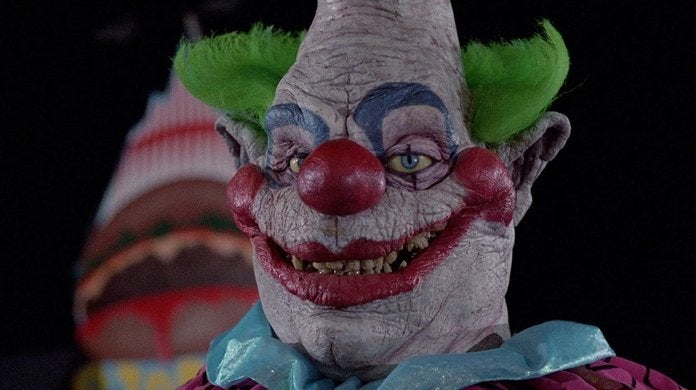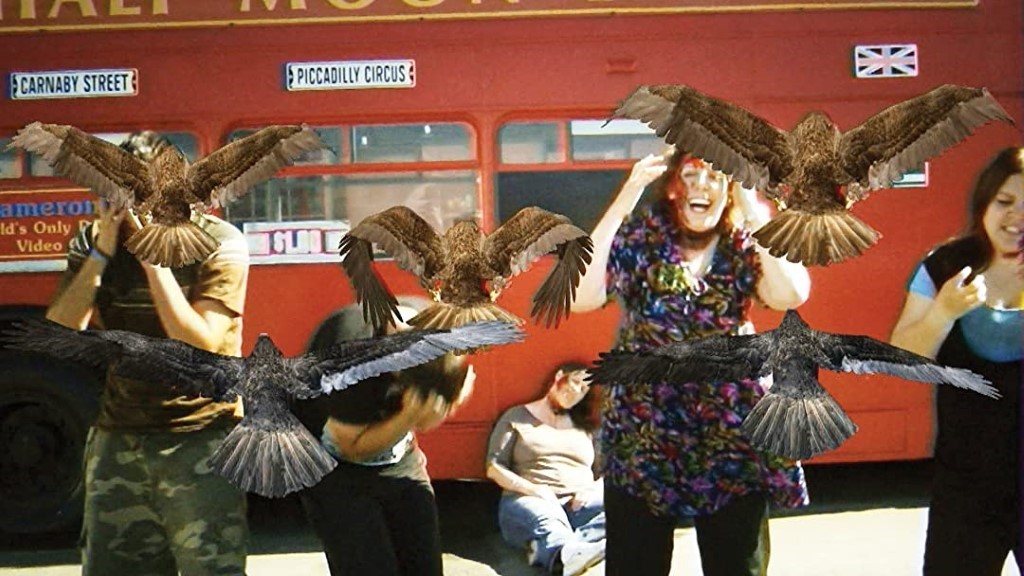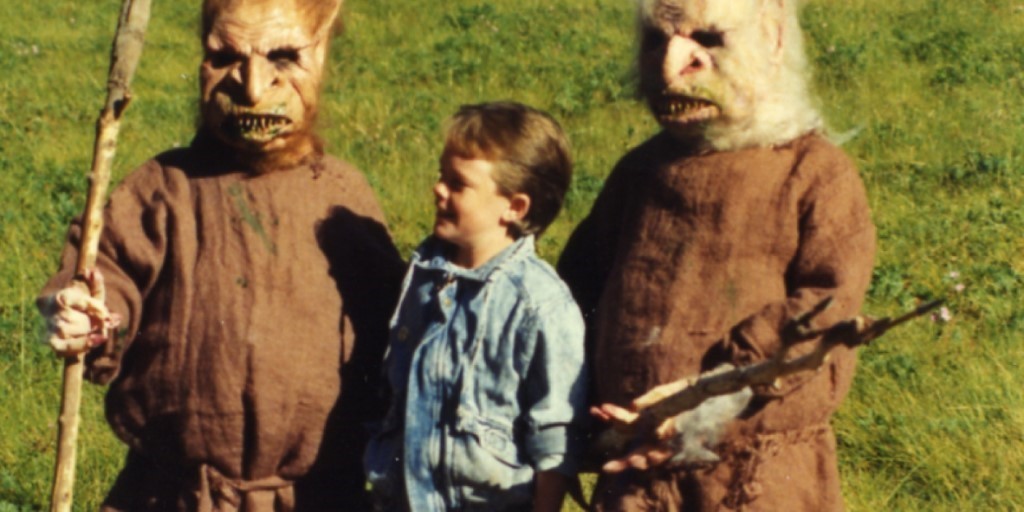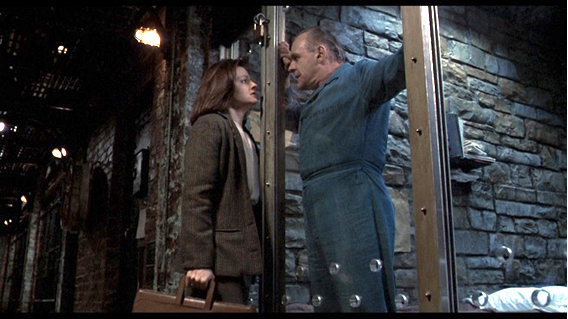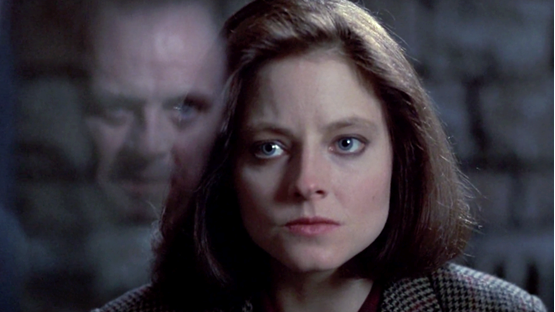As the first edition of our soon-regular column, “What We’re Watching,” we’re blending our cinephilia with Halloween spirit to reflect on perhaps less obvious choices for holiday viewing. Take up our recommendations at your own risk, as these films are sure to give you a spook!
The Best of the Worst: Four Ridiculous Horror Films for All Seasons
Sydney Boone
I have a confession to make: I love terrible horror movies. A shameful thing to admit among my fellow film writers, but it’s the truth—for all I pride myself on my cinematic palate, a space in my heart will always be reserved for the best of the worst, those “so bad they’re good” flicks which aim for scares and elicit snorts.
I’m not sure exactly when this strange obsession took root in me, but I do know that it rears its head around this time each year, prompting me to sift through the archives of YouTube and the dregs of every streaming service I can subscribe to in search of a fix. Usually, I find myself disappointed by run-of-the-mill cinematic junk: films either too boring to be charming or so terrible as to be altogether unbearable. Sometimes, I find myself surprised by films which defy my expectations and end up being rather good. But occasionally, in those rare, wondrous moments in which I strike gold, I discover a movie that straddles the line between terrible and brilliant, trash and treasure, flop and art.
What differentiates films that are “so bad they’re good” from those that are just plain bad? For a film to fit this mold as I conceptualize it, it must not only be both flawed and entertaining, but its entertainment factor must derive from its flaws, and these flaws must be (at least for the most part) unintentional. As such, I should note that while I use the word “camp” in several of my descriptions below, you won’t be finding cult-classic camp features such as The Evil Dead or Fright Night on this list—while I certainly have been watching such films recently, I do not consider them to be “bad” movies, nor do I consider their enjoyability to derive from unintentional flaws. Similarly, I will not be including satire, commentary, or parody films, as their “badness” is entirely intentional.
So, without further ado, I present a brief list of recommendations for my fellow connoisseurs of the creepy and the campy (or anyone simply seeking some season-appropriate laughs). May my endless hours of searching serve the viewing pleasure of others.
Birdemic: Shock and Terror (2010) dir. by James Nguyen
Imagine if Alfred Hitchcock’s The Birds was written, filmed, and edited on an early 2000’s iPod by a group of middle schoolers for a school project on the day before it was due. Birdemic tries to be a romance, a thriller, and an environmental commentary simultaneously, and it fails spectacularly on all three counts. Every aspect of this film is hilariously pathetic: the effects are terrible; the acting is worse; and the sequence in which a group of “survivors” battle a flock of clip-art eagles with wire clothing hangers (which were, apparently, the most effective weapons they could find) never fails to send me into hysterics.
Chopping Mall (1986) dir. by Jim Wynorski
This cleverly titled horror comedy follows a group of teenage couples who become trapped in the shopping mall in which they work during a post-closing hangout. The party goes swimmingly until the mall is struck by lightning, which causes the security robots to go rogue and attempt to hunt down and slaughter the young trespassers. At times, Chopping Mall feels more like a hodgepodge of predictable tropes and copy-pasted dialogue than a watchable film, but it makes up for these shortcomings with its ridiculously cheesy acting and the increasingly hilarious, over-the-top deaths of its characters (who are so bland and indistinguishable that it is rather a joy to see them go).Oh, and the robots can shoot lasers. Obviously.
Killer Klowns from Outer Space (1980) dir. by Stephen Chiodo
It may not be entirely fair of me to include Killer Klowns in this list, as most of its campy absurdity is intentional rather than a by-product of a truly terrible picture, but the film takes itself so wonderfully seriously that its intentional corniness often feels accidental. As its title suggests, this cult classic of the eighties follows a group of residents of a small town during an invasion by extraterrestrial super-predators who take the form of grotesque carnival clowns. These alien invaders capture humans in cotton candy cocoons, shoot at them with popcorn-hurling guns, and consume them with carnivorous shadow puppets. It’s exactly as zany as it sounds, but the film manages to cultivate a genuine sense of danger alongside its kookiness through some unexpectedly impressive practical effects.
Troll 2 (1990) dir. by Claudio Fragasso
And now, the moment that my fellow terrible film aficionados have undoubtedly been waiting for. Regarded by many as the holy grail of terrible horror movies, this flick boasts a whopping 5% on Rotten Tomatoes and is widely considered one of the worst movies ever made. Despite being marketed as the sequel to the 1986 horror film Troll, Troll 2 has no connection whatsoever to its predecessor. In fact, the film doesn’t feature any trolls at all—its antagonists come in the form of human-posing, vegetarian goblins hailing from the aptly-named town of Nilbog (that’s “goblin” spelled backwards, because of course it is) who devour their victims after transforming them into gooey puddles of plant matter. Troll 2 boasts some of the worst acting (if you haven’t seen the iconic “Oh my God!” snippet, do yourself a favor and look it up) and laziest costumes (each goblin wears little more than a brown shirt and a cheap rubber mask) to ever grace a screen, and the language barriers between its cast and crew lead to some memorably absurd dialogue. Over the years, Troll 2 has gained a significant cult following, even spawning a documentary (aptly titled Best Worst Movie) in 2009.
Donnie Darko: An Underrated Halloween Essential
JaZmyn Shambley
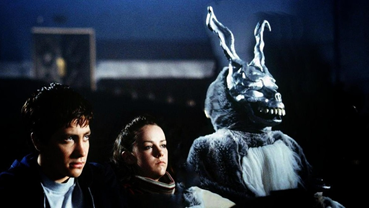
Perhaps Richard Kelly’s Donnie Darko (2001) is not the most conventionally gory or gut-wrenching flick that people seek out during the Halloween season, yet its chilling moments of anxiety-invoking cinematography, dark visual tones, and formidable themes of fear and death prove this off-beat cult classic as a must-see before the month of October comes to a close. The film lies more along the lines of a psychological thriller due to its emphasis on Donnie Darko’s changing mental state as he receives commands to commit various crimes through his peculiar “hallucinations”. These commands come from a man named Frank behind a grotesque bunny rabbit suit, ultimately propelling the film’s strangeness. Mix in a bit of 1980s coming-of-age nostalgia, and you’ve got a uniquely unsettling yet entertaining watch.
Darko stars a teenaged Jake Gyllenhaal as the film’s titular main character, alongside a star-studded cast composed of Drew Barrymore, Patrick Swayze, and… Seth Rogen. In retrospect, nearly 20 years after its release, the choice of casting appears a bit odd seeing how these particular actors go against the grain in regard to their usual roles. Additionally, one simply would not expect this lineup together, contributing to the film’s eccentricity. Yet all of the characters fit perfectly into the complex plot in order to flesh out Donnie Darko’s transition from a cynical teenager to an altruistic one. The plot’s bizarre main events coincide with an alarming countdown to the apocalypse set for Halloween night, all the more reason this film will get you in the spooky spirit.
Donnie Darko explores the existential angst of teenagers, successfully capturing the feeling of fear and isolation as a result of questioning our own existence and navigating the world. Donnie, though seemingly lost, finds his way through the stubbornness and immoral nature of the adults around him, and ultimately overcomes his anxieties to become the hero in his own life and others’. It would be an injustice, though, to write as if the film merely perpetuates tropes of a teen-angst drama. Darko more complexly invites us to develop our own conclusions, whether philosophical, psychological, or religious. The film’s questions echo those of life, proving that life’s biggest ponders- the idea of fear, the unknown, and the aftermath of the world’s end, (especially in a time where a raging pandemic prevails)- can be the scariest concepts of all.
A reality where Darko is not as monstrous in popularity regarding favored Halloween movies equates to a rather disappointing one in and of itself. Sure, the film does not align with that of a bloody horror movie, and consequently will not shock you as much as, say, a traditional slasher flick would. However, Darko’s genre hybridityprovides us with a refreshing dark cinematic experience. This film is haunting; it will leave you contemplating its true meaning days after your initial viewing. As we continue to quarantine, let Donnie Darko be your film of choice this Halloween. Living amidst a pandemic leaves many worrying about the world’s future, to which this film, in response to those worries, acts as both a form of escapism in all of its weird brilliance, as well as a scary reminder of our disease-afflicted society and what awaits us once the clock on our countdown runs out of time. That, along with a creepily disturbing bunny rabbit, will assuredly send shivers down anyone’s spine.
Revisiting Silence of the Lambs and The Horror of Sophisticated Chauvinism
Sophia Stolkey
Hannibal Lecter, the devilishly clever former psychiatrist with a penchant for eating fellow humans, has been widely considered one of cinema’s most formidable antagonists ever since the landmark release of Jonathan Demme’s Silence of the Lambs, an adaptation of the novel by Thomas Harris, on Valentine’s Day in 1991. The film instantly became a cult classic, mainly due to a strange cultural fascination with the “seductive psychopathy”[1] of Anthony Hopkins’s performance as the cartoonishly cruel cannibal. Undoubtedly, Hopkins perfectly harnesses the ability to hold his audience captive with his piercing, literally unblinking stare. This Halloween season I was compelled to revisit the film and the legendary caricature of Dr. Lecter with not adoration, but disgust at such a dreadfully accurate representation of a cunningly pervasive male gaze.
Like many who appreciate more than just the surface-level grotesque plot and serial-killer villains, I am an avid fan and defender of Silence’s protagonist— Clarice Starling (Jodie Foster), a whip-smart FBI agent-in-training sent into the dungeons of a secure psychiatric hospital to interview Hannibal Lecter for a psychological profile. Hannibal is notoriously uncooperative with the FBI, so why does Starling’s esteemed boss Jack Crawford (Scott Glenn) send her of all the other trainees on this especially disturbing mission? Is it because he truly sees the talent and drive within her, or because she’s an attractive woman who Dr. Lecter might feel more…comfortable with?
Whether or not Jack Crawford’s intentions behind choosing Clarice for this task are really noble, Clarice assuredly proves to be more than worthy of the challenge. As an early 1990s cinematic heroine, her character has often been heralded for being “ahead of the times” in terms of feminist writing in film and television. Foster’s gutsy performance, combined with screenwriter Ted Tally’s implicit critique of the male gaze through Clarice’s hard-won autonomy in a field full of misogynistic men, make the film a refreshing feminist take on the genres of thriller, crime, and horror. Additionally, director Demme noticeably angles his cameras downward when other characters, especially Clarice’s condescending male colleagues, are speaking to her. Everyone speaks down to Clarice and as a result, film critics like Nicholas Barber have noticed that “Silence of the Lambs is a film about what it’s like for women to be stared at by men.”[2] While Clarice’s unfaltering, resilient determination to save others despite the well-established sexist obstacles drives the film toward resolution, those imperious stares are what ominously linger in my mind—none more so than the unrelenting stare of Hannibal Lecter.
Upon encountering Hannibal for the second time, Clarice now seems more familiar with his immature and crude sexual speculations about her, disguised as clever back-handed inferences by his captivating tone and meticulous diction. In the middle of their conversation about Benjamin Raspail (one of Buffalo Bill’s earlier victims), Hannibal randomly changes the subject to a suspected sexual relationship between Clarice and her overseer Jack Crawford. Giddily suggesting that Clarice’s FBI career is being boosted by Crawford’s sexual attraction toward her, he smirks as he performs his objectifying routine. But Clarice seems to see it coming from a mile away, brushing off each belittling jab with her own knowing smirks and witty retorts. It becomes clear over time that Hannibal finds Clarice’s imperviousness to his intimidation tactics all the more attractive; yet, because of his acute intellect, he ultimately gets away with his chauvinistic, egocentric insanity. The film’s final scene fills me with rage, dread, and a distinctly disgusting horror when Clarice’s achievement in the wake of Buffalo Bill’s defeat becomes undermined by a single phone call.
The film’s final moment, a long shot accompanied by Howard Shore’s haunting orchestral score finale, masterfully draws out the horror of Hannibal’s smug success as he nonchalantly stalks his next victim, eventually blending perfectly in with a crowd of people along bustling island street. He walks with a sauntering confidence, as though knowing that with one phone call, he has usurped Clarice’s heroic happy ending. There is something terrifying about the soaring popularity of Hannibal Lecter as not only an entertainingly cheeky villain but also an irresistible monster. He has become a pop culture icon, while the resolute core character of Silence – Agent Starling — has since been more or less relegated to the franchise’s background. The popularity of Hannibal’s sophisticated chauvinism, his childish sexism lurking beneath a mask of intellect and flamboyant self-indulgence, is what scares me the most this Halloween of 2020.
[1] Vincent Camby, Review/Film “Methods of Madness in ‘Silence of the Lambs’ (New York Times, 1991)
[2] Nicholas Barber, “Why The Silence of the Lambs is a feminist fable” (BBC Culture, 2017)

